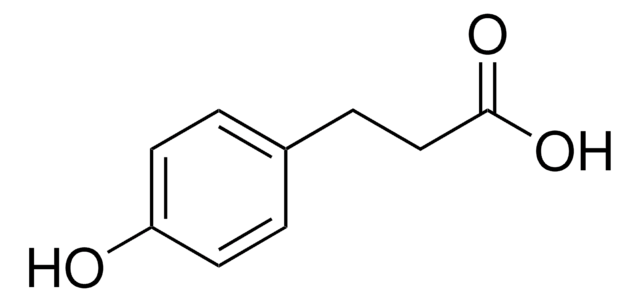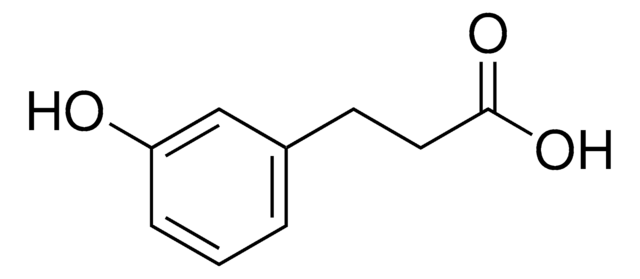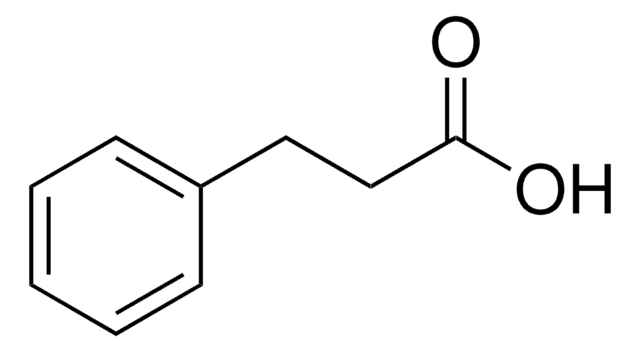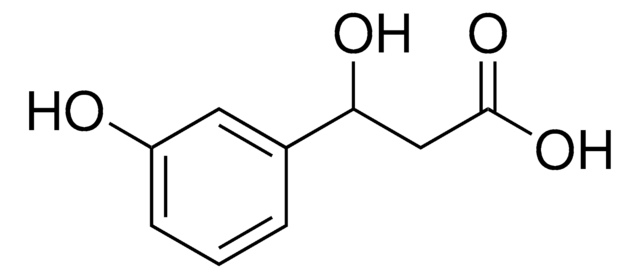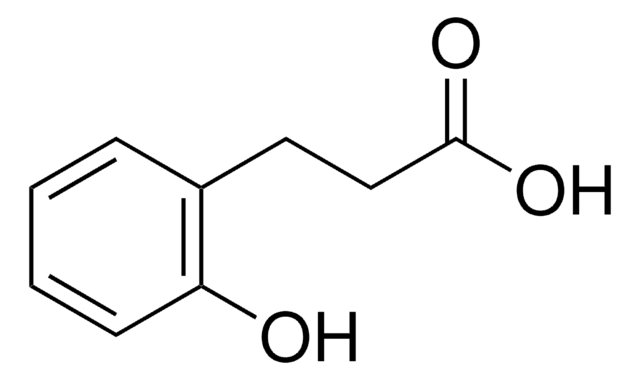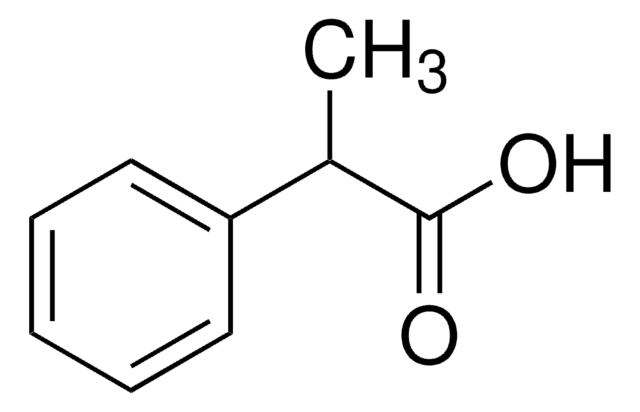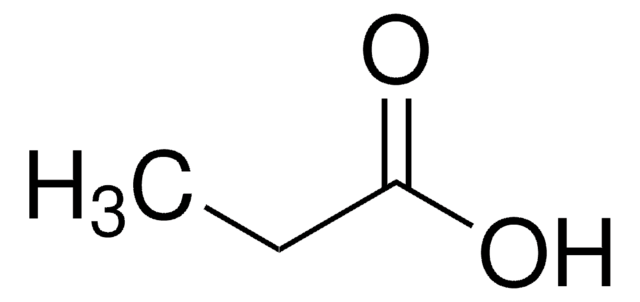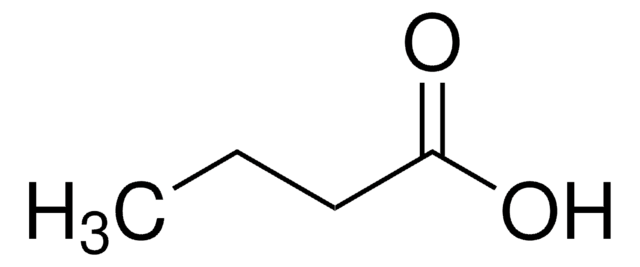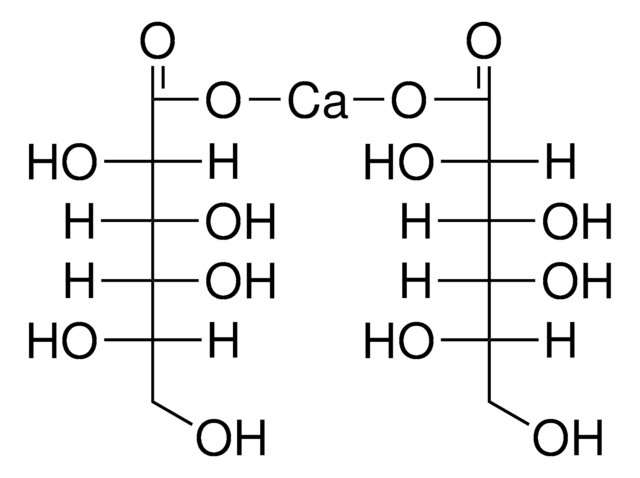91779
3-(3-Hydroxyphenyl)propionic acid
analytical standard
Synonym(s):
3-(3-Hydroxyphenyl)propanoic acid, NSC 33135, NSC 39468
Sign Into View Organizational & Contract Pricing
All Photos(1)
About This Item
Empirical Formula (Hill Notation):
C9H10O3
CAS Number:
Molecular Weight:
166.17
Beilstein:
1947445
EC Number:
MDL number:
UNSPSC Code:
12352200
PubChem Substance ID:
NACRES:
NA.24
Recommended Products
grade
analytical standard
Quality Level
Assay
≥98.0% (HPLC)
shelf life
limited shelf life, expiry date on the label
application(s)
clinical testing
format
neat
SMILES string
OC(CCC1=CC=CC(O)=C1)=O
InChI
1S/C9H10O3/c10-8-3-1-2-7(6-8)4-5-9(11)12/h1-3,6,10H,4-5H2,(H,11,12)
InChI key
QVWAEZJXDYOKEH-UHFFFAOYSA-N
Biochem/physiol Actions
3-(3-Hydroxyphenyl)propanoic acid is one of the major metabolites of ingested caffeic acid and of the phenolic degradation products of proanthocyanidins (the most abundant polyphenol present in chocolate) by the microflora in the colon. 3-(3-Hydroxyphenyl)propanoic acid is suspected to have antioxidants properties and is actively absorbed by the monocarboxylic acid transporter (MCT) in intestinal Caco-2 cell monolayers.
Storage Class Code
11 - Combustible Solids
WGK
WGK 3
Flash Point(F)
Not applicable
Flash Point(C)
Not applicable
Choose from one of the most recent versions:
Already Own This Product?
Find documentation for the products that you have recently purchased in the Document Library.
Letizia Bresciani et al.
Food research international (Ottawa, Ont.), 141, 110137-110137 (2021-03-02)
Cranberries (Vaccinium macrocarpon) represent an important source of anthocyanins, flavan-3-ols and flavonols. This study aimed at investigating in vitro the human microbial metabolism of (poly)phenols, principally flavan-3-ols, of unformulated- and phytosome-formulated cranberry extracts. After powder characterization, a 24-h fermentation with
Eileen Carry et al.
Journal of pharmaceutical and biomedical analysis, 159, 374-383 (2018-07-23)
Grape-derived products contain a wide array of bioactive phenolic compounds which are of significant interest to consumers and researchers for their multiple health benefits. The majority of bioavailable grape polyphenols, including the most abundant flavan-3-ols, i.e. (+)-catechin and (-)-epicatechin, undergo
Jin-Ran Chen et al.
Communications biology, 4(1), 53-53 (2021-01-10)
The G protein-coupled receptor 109 A (GPR109A) is robustly expressed in osteoclastic precursor macrophages. Previous studies suggested that GPR109A mediates effects of diet-derived phenolic acids such as hippuric acid (HA) and 3-(3-hydroxyphenyl) propionic acid (3-3-PPA) on promoting bone formation. However, the
Veronika Pilařová et al.
Talanta, 185, 71-79 (2018-05-16)
Fast, selective, and sensitive ultra-high performance liquid chromatography method with tandem mass spectrometry detection for the determination of quercetin and its metabolites with various physico-chemical properties such as molecular weight, lipophilicity, and acid-base properties has been developed. These compounds included
Johanna Maukonen et al.
Journal of agricultural and food chemistry, 65(18), 3748-3756 (2017-04-27)
Brewer's spent grain (BSG) is the major side-stream from brewing. As BSG is rich in dietary fiber and protein, it could be used in more valuable applications, such as nutritional additives for foods. Our aim was to elucidate whether an
Our team of scientists has experience in all areas of research including Life Science, Material Science, Chemical Synthesis, Chromatography, Analytical and many others.
Contact Technical Service